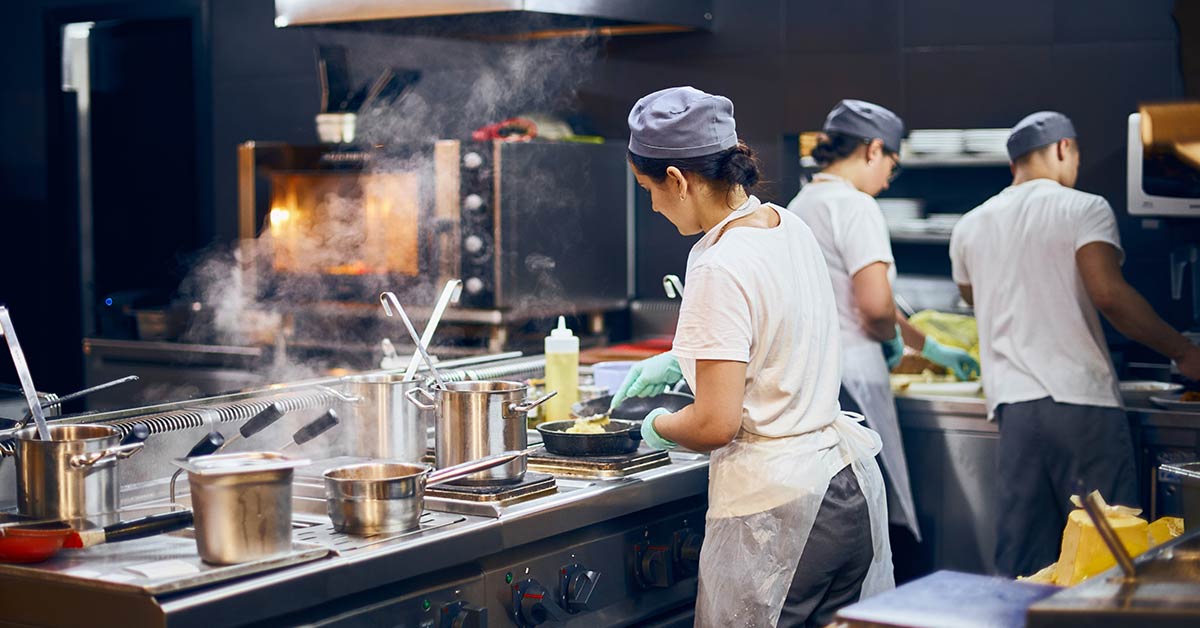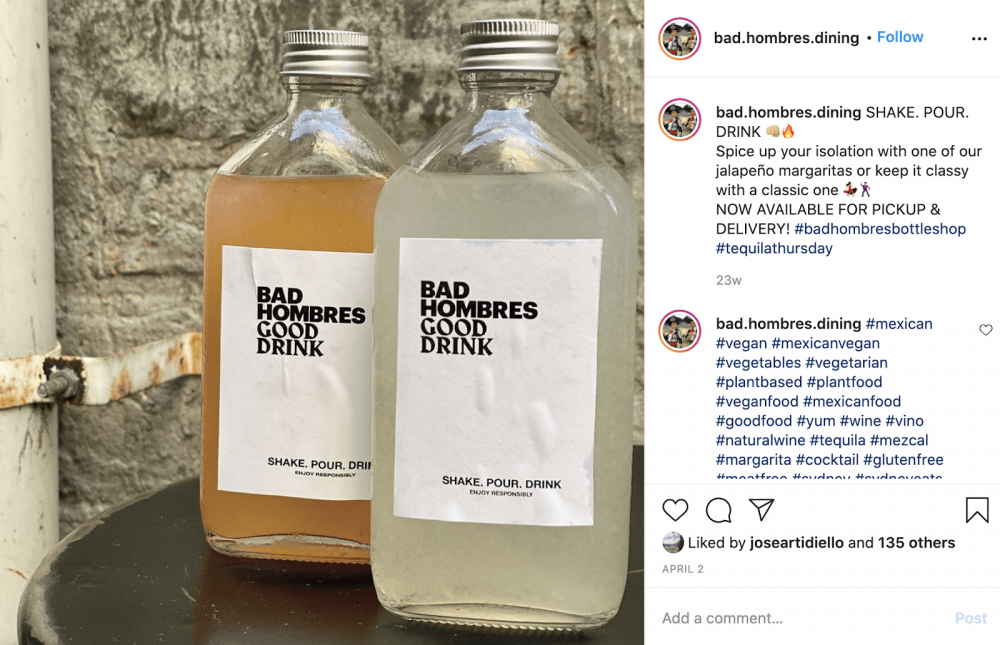
With limits on table service dining as a result of COVID-19, restaurants of all sizes face pressure to strengthen off-premise sales, which has accelerated their focus on takeout, delivery and order-ahead options.
While the industry-wide focus on off-premise sales is under a microscope now, it’s a trend that has been a long time coming. A 2019 report from the National Restaurant Association found that 80% of foodservice operators highlighted off-premise sales as a major area of focus and it’s not surprising why that is. Here’s a quick snapshot:
- Online ordering and delivery has grown by 105% in Australia since 2014.
- Aussie consumers spend $2.6 billion ordering food through either a restaurant’s website, app or through third-party aggregators like UberEats or DoorDash.
- Each year, roughly 68 million online food orders are made in Australia, which translates to 7,000 orders per hour.
Off-premise sales are clearly trending upwards, but lofty service fees and the fear of increased operational complexity is still a concern for many operators looking to move into that market.
Those pain-points have birthed an entirely new method of off-premise food service: Ghost kitchens.
Also referred to as cloud kitchens or dark kitchens, ghost kitchens aim to help restaurants expand their delivery service and reach more customers at a (seemingly) minimal cost. But what is a ghost kitchen exactly?
Let’s explore ghost kitchens, their benefits, their drawbacks, and why we’re likely to see table service restaurants explore them as a way to expand their brand’s footprint and make more sales.
- What is a ghost kitchen?
- What is a virtual restaurant?
- Why are virtual restaurants becoming popular?
- What’s better: Ghost kitchens or virtual restaurants?
- The pros and cons of a ghost kitchen
- The pros and cons of a virtual restaurant
- Examples of virtual restaurants
Let’s dive in!
What is a ghost kitchen?
“A ghost kitchen is where virtual brands are produced without a brick and mortar location. They’re facilities that are made solely for producing virtual brands,” explains celebrity chef Eric Greenspan.
Notable companies in the ghost kitchen space are Kitchen United and Cloud Kitchens in the USA and Space Now in Australia. Essentially, a ghost kitchen is a rented kitchen space where restaurateurs can launch a virtual restaurant brand without a brick and mortar location.
What is a virtual restaurant?
While the terms “ghost kitchen” and “virtual restaurant” are often used interchangeably, they are not the same thing.
Unlike a ghost kitchen, virtual restaurants don’t rent kitchen space through a third party. They have a brick and mortar location(s), use their kitchens to support online orders and typically have a delivery-exclusive menu.
An example of a virtual restaurant is what the award-winning, Montreal-based restaurant Alma is doing. When faced with dwindling business as a result of COVID-19, they launched Tinc Set, a concept where customers place their orders online and pick them up at a designated time from the restaurant’s charming back-alley.

For restaurants with a brick and mortar looking to get into off-premise ordering, virtual restaurant concepts like this are absolutely worth exploring. You have the flexibility of supporting take-out, order-ahead and/or delivery, and are essentially creating another revenue stream to cover the expenses of having a physical location.
Why are virtual restaurants becoming popular?
In short, it’s because many are forecasting that the future of foodservice is off-premise, through delivery, take-out and order ahead.
Selling through third-party delivery services can be costly, with service fees for selling through certain aggregators reaching nearly 20%. As a virtual restaurant, however, operators can choose how they sell.
Using online ordering platforms like Bopple, restaurants can take orders directly from their website rather than selling through a third-party. If they want to partner with third-parties to either expand their delivery service or outsource delivery couriers (or both), they still can, but at least they’re not obligated to sell exclusively through a platform that eats into their already thin margins.
What’s better: Ghost kitchens or virtual restaurants?
The answer largely depends on the context. Ghost kitchens can be useful for launching a new business with less capital, while virtual restaurants are a solid option for existing restaurants looking to get into off-premise sales.
With virtual restaurants, you can still sell through popular delivery aggregators, but you can use your own equipment and kitchen to prep orders rather than rent a ghost kitchen space.
The benefits and downside of a ghost kitchen
Benefits
Lower overhead costs: Without a storefront, ghost kitchens avoid all the overhead costs associated with buying or leasing a commercial restaurant space. If you want to update your menu, you don’t need to re-print anything. Just make updates online and you’re all set.
Capitalise on increasing demand for online ordering: Ghost restaurants can sell through as many third-party delivery services as they want as well as through their website.
Downside
Third-party delivery aggregator fees: It’s no secret that third-party delivery aggregators collect a transaction and/or service fee on each sale made on their platform. If left unchecked, this can certainly take away from a restaurant’s net profits.
Reputation management: With no customer-facing service, a ghost restaurant’s reputation relies heavily on word of mouth and online reviews. Actively promoting positive reviews and responding to negative reviews is a must for ghost restaurants.
Increased pressure on marketing: Brand-building in a strictly online space, without a brick and mortar location to drive awareness, makes effective digital marketing key to customer acquisition.
Limited customer base: Given that most delivery services limit your delivery zone to a three to five-mile radius around your ghost kitchen, the area you can effectively call potential customers is limited.
The benefits and downside of a virtual restaurant
Benefits
Capitalize on demand for online ordering: Virtual restaurants are the best way for an existing restaurant (one that has a physical location) to explore meal delivery, take-away and order ahead. No need to rent out a ghost kitchen, you already have everything you need to prep orders from your restaurant’s kitchen.
Potential to avoid third-party fees: With an ordering system like Bopple, restaurants can take orders without relying on third-party delivery services and succumbing to their transaction and service fees. If they want, though, they can certainly sell through third-parties as well.
Ownership of the customer experience: Since customers can order directly through your website and, if you choose the same path as Tinc Set, pickup their order from your establishment, operators have more control over their customer’s experience: from packaging to the food quality.
Downside
Requires a commercial restaurant space: For restaurateurs that are just starting out, virtual restaurants have one big barrier to entry: needing a physical restaurant space. As a result, virtual restaurants aren’t typically someone’s first foray into the restaurant industry. Rather, they’re a better option for restaurants that actively want to offer both table service and delivery, takeout, or order-ahead options.
Multiple menus to manage: If your table service, takeout and delivery menus differ from one another, that means you have multiple menus to manage. Without the right tools, managing multiple menus can be a challenge. With Lightspeed Delivery, though, operators can manage delivery, takeout and table service menus all from the same place: from the listed items to their prices and photography. Push menu changes to your Restaurant POS system, website menu and to the menus featured on each third-party delivery service.
Potentially cumbersome order fulfilment: Imagine needing to dedicate a tablet for each ordering method. Let’s say you offer table service, takeout and delivery via your website, and you also sell through UberEats and DoorDash. That’s four tablets, each receiving orders independent of one another.
Prior to two-way delivery integrations like Lightspeed Delivery, restaurants would need to assign an employee to take the incoming orders from each tablet and manually input them into the restaurant POS system.
Not ideal. But with our delivery integration, incoming orders from all channels–your table service, website and third-party aggregators–are automatically pushed from each channel directly to your restaurant POS and Kitchen Display System (KDS).
While order fulfilment used to be a drawback to offering delivery and takeout, that’s no longer the case as long as you have the right tools.
Examples of virtual restaurants
COVID-19 has accelerated the number of restaurants that have quickly pivoted to a virtual restaurant model. While social distancing measures are in place, they’re maintaining cash flow by offering takeout and delivery options and, once measures are lifted, they’ve secured an alternative way to serve customers asides from walk-ins and table service.
Here are three establishments that have knocked their virtual restaurant concepts out of the park:
Social Society, Sydney
Located in Green Square’s new food precinct, one of Sydney’s most up-and-coming neighbourhoods, Social Society demonstrated creativity and resilience when faced with dwindling walk-in customers.
Rather than throw in the towel, they quickly transitioned their cafe, offering take-away only food and coffee, and even started selling groceries and order-ahead meals.

Their Instagram account also regularly shares user-generated content (UGC), as well as new menu additions.
Bad Hombres, Sydney
Bad Hombres is a popular Mexican inspired plant-based restaurant in Sydney’s Surry Hills. Bad Hombres offer online ordering directly on their website using Bopple, where customers can select their order and either opt for delivery or pick-up.
In light of COVID-19, Bad Hombres also started offering pre-batched cocktails, allowing customers to order their favourite Mexican tipple online to either pick up or have it delivered to their doorstep.

Virtual restaurants are here to stay
While we’re hearing a lot about virtual restaurants now, the concept of selling through online sales channels, whether it’s a third-party aggregator or through your own website, isn’t new. Rather, COVID-19 has accelerated the adoption of an already emerging trend.
Out of necessity, restaurants are now exploring the concept of virtual restaurants as a way to diversify how they sell to and serve customers. With the right technology to help run the whole operation, restaurants can simultaneously manage table service and online orders without missing a beat. Want to know more about the future of dining? Read our free white paper on the future of dining.
Want to learn how to take your restaurant online and start selling via take-out, order-ahead and delivery? Contact our team of restaurant experts today for a free consultation!

News you care about. Tips you can use.
Everything your business needs to grow, delivered straight to your inbox.



